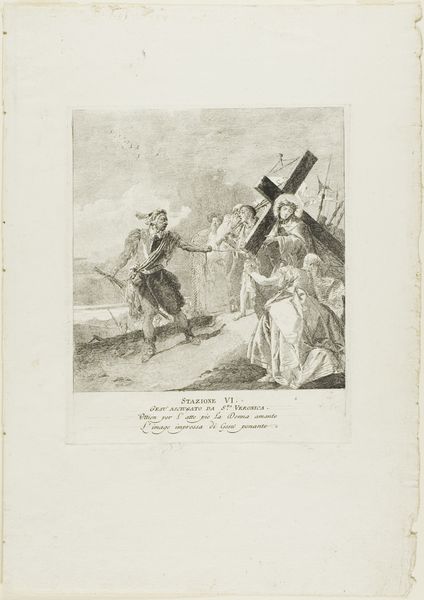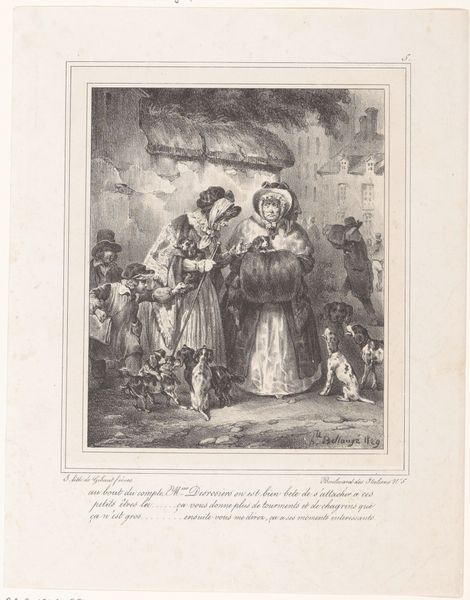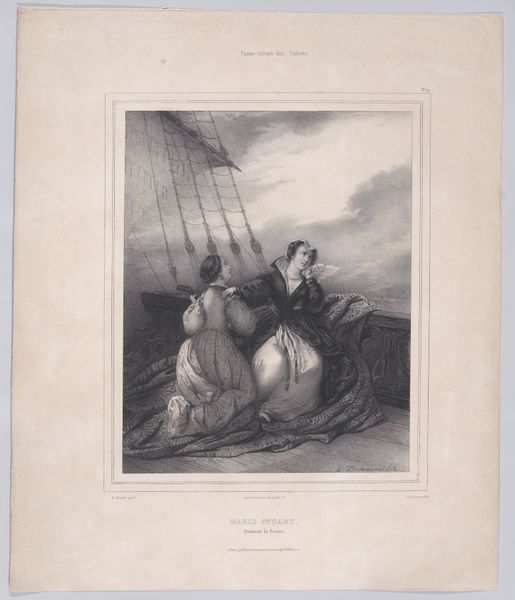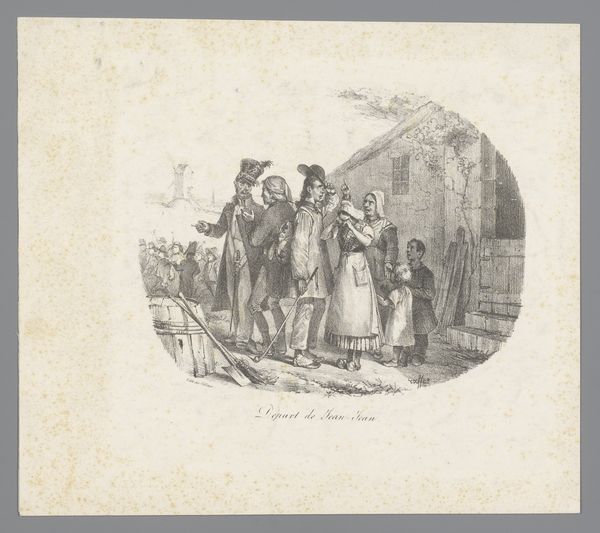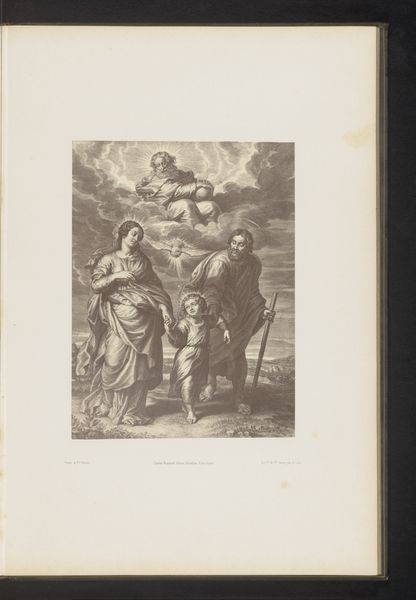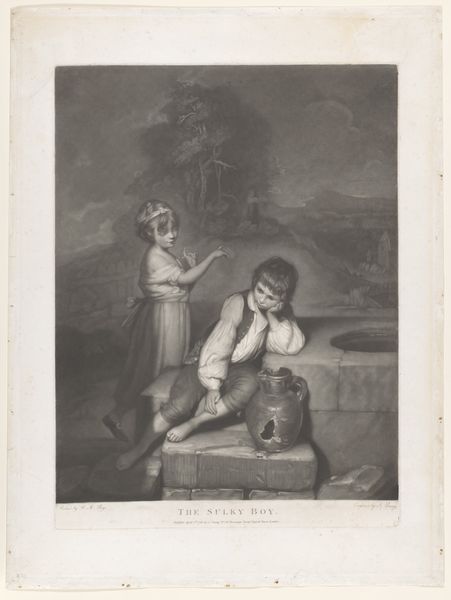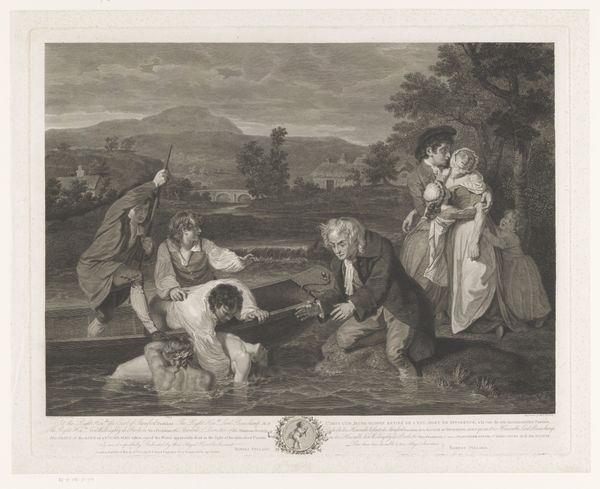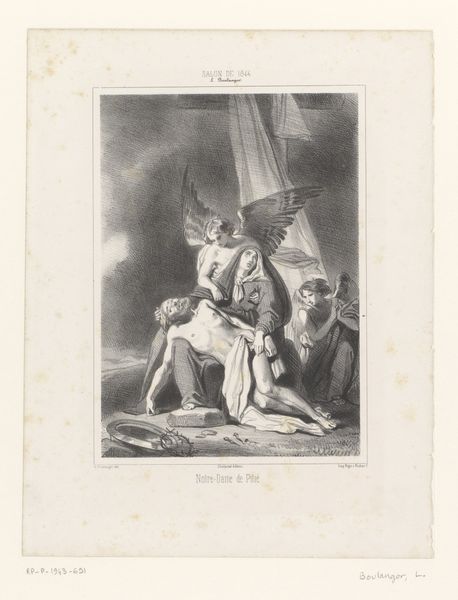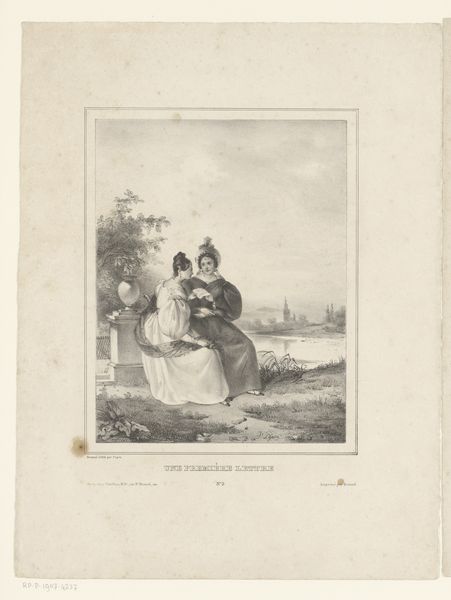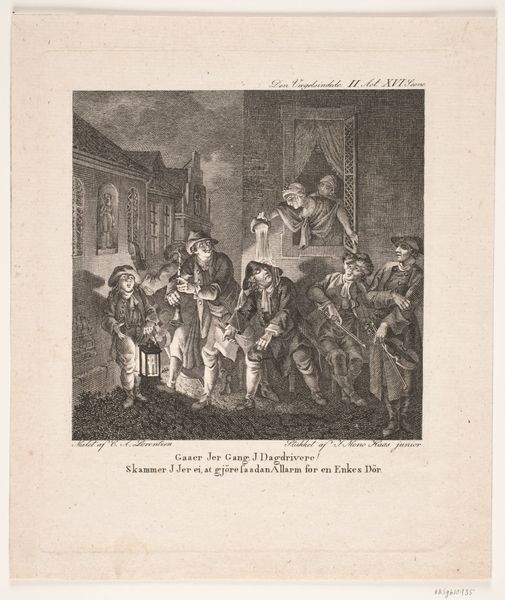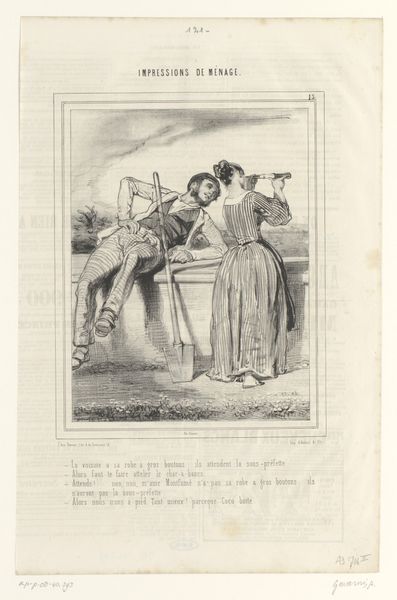
drawing, print
#
pencil drawn
#
drawing
#
toned paper
#
light pencil work
# print
#
pencil sketch
#
charcoal drawing
#
charcoal art
#
pencil drawing
#
england
#
pencil work
#
watercolour illustration
#
watercolor
Dimensions: Plate: 14 × 10 15/16 in. (35.5 × 27.8 cm) Sheet: 16 1/16 × 14 1/2 in. (40.8 × 36.8 cm)
Copyright: Public Domain
Curator: So, we’re looking at "June," a print made by Francesco Bartolozzi after William Hamilton, dating back to 1789. It offers a scene of rural life in England, found here at the Met. What strikes you immediately about it? Editor: It's the softness, the muted tones, the overall gentleness of the image that captivates. There’s a pleasing circular composition within the oval frame and the figures are elegant, despite their work. Curator: It's an idealized version of labor, certainly. Hamilton was known for these pastoral scenes catering to a growing interest in rural romanticism. The image coincides with the era of enclosure in England, but does little to explore that impact. This sort of imagery helped construct national identity around land ownership and productivity. Editor: True, the social commentary is indeed absent, allowing a focus on pure form. Consider the lines leading our eye through the composition, from the figures in the foreground to the distant landscape, subtly organized, it presents a balance and serenity. Even the text surrounding the picture feels like another art element in its location and careful design. Curator: And that text underscores the image's intent – it idealizes a sense of rural abundance at a time of real economic stratification and displacement. It offers, then, not an unmediated window, but a highly crafted image, speaking to specific social fantasies of an agrarian golden age. Consider the implications in contrast to urbanization that drove production! Editor: A powerful contrast indeed! So, the technical facility paired with the symbolic framing creates an emotionally complex artwork where nostalgia, political evasion and pure aesthetics strangely combine and communicate, however quietly. Curator: Precisely. It really does invite us to reflect on art's dual role—its aesthetic properties intertwined with social and political dimensions. Editor: The composition guides a narrative while obscuring its deeper context; quite the paradox.
Comments
No comments
Be the first to comment and join the conversation on the ultimate creative platform.
